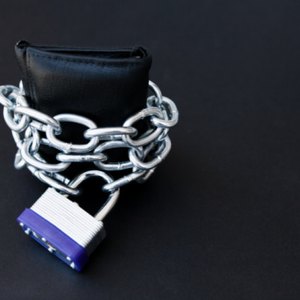
The term “savings account” typically refers to a bank or credit union account you use to deposit, but infrequently withdraw, money. You can access your money on a regular basis, however, including for withdrawals. Some financial accounts used for saving money, however, restrict your access to your funds. Understanding how different savings products limit your access to their funds will help you decide which you want to open and fund.
Read More: W-2 Forms: What It Is, Who Gets One & How It Works
What Is a Savings Account?
A savings account lets you save money you won’t be using on a regular basis in a safe financial product. Unlike a checking account, which is often set up to use to pay bills on a regular basis, a savings account is mostly set up to add to your funds. For this reason, banks and credit unions might set a limit on how many withdrawals you can make for free each month.
Savings accounts might also come with minimum balance requirements. For example, if you have an account with a $3,000 minimum monthly balance requirement, you might have your monthly service fee waived. If you don’t maintain your balance, you might have to pay a small monthly fee (around $15 to $25).
Similar to a savings account, a money market account lets you deposit money, but usually has higher interest rates, along with higher minimum balance requirements. You have more access to your funds with a money market account.
IRAs and 401(k) Accounts
If you put money into a traditional Individual Retirement Account, Roth IRA or 401(k), you can’t withdraw your money before a certain age without paying a penalty. The penalties might change, however, based on legislation to help citizens during the COVID-19 pandemic, explains Personal Capital Advisors. If you withdraw from these accounts, you’ll owe federal income tax, a penalty based on a percentage of the amount you withdraw (currently 10 percent in 2022) and state income tax if you live in a state that collects income tax.
In 2020, the U.S. Congress passed the CARES Act, which removed some penalties on the withdrawal of retirement funds. For example, if you have turned 55 years old and you lose your job, you could make a penalty-free withdrawal to help pay your bills. Check with a tax professional to make sure this and other recent legislation still applies.
Withdrawing or Borrowing?
Another factor to consider when considering withdrawing money from a qualifying retirement savings account, like a 401(k), is if you plan to put the money back into the account or not. If you plan to borrow the money and pay it back, you won’t face penalties, explains the IRS, but you will pay interest on the loan amount.
Again, check with a tax professional and your plan administrator to find out what accounts are eligible, any limits on the amount you can withdraw and the timeframe for paying back the loan.
Consider Also: Form 1040: What You Need to Know
Other Savings Options
You can purchase government bonds that guarantee you won’t lose money, but don’t pay much interest. An exception is the U.S. Treasury Department's Series I savings bond that pays 7.12 percent annual interest (only available for purchase for a limited time in 2022).
Bonds give you a safe, conservative place to park your money, but you can’t cash them for a specific time period (the Series I bond makes you wait for one year). In additi0n, you might pay a penalty if you cash them before their maturity date (the Series I bond deducts your last three month’s interest if you cash it before five years).
You can also save money with a certificate of deposit. These are offered by different banks, credit unions and financial services companies and offer little interest, but let you cash them sooner than bonds.
References
Resources
Writer Bio
Steve Milano has written more than 1,000 pieces of personal finance and frugal living articles for dozens of websites, including Motley Fool, Zacks, Bankrate, Quickbooks, SmartyCents, Knew Money, Don't Waste Your Money and Credit Card Ideas, as well as his own websites.

